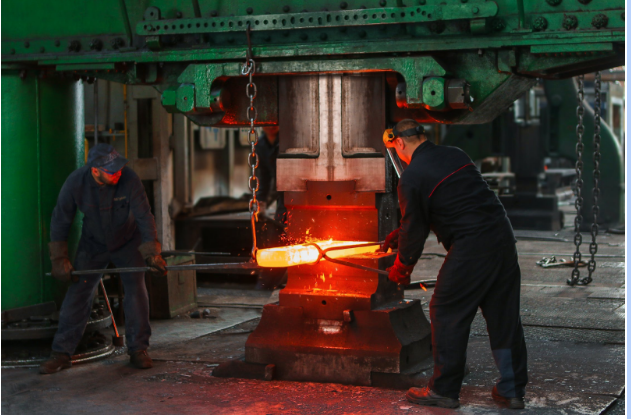Manufacturing processes have been around for centuries, and the manufacturing industry has never been more competitive. For example, in 2019, China’s manufacturing sector alone amounted to almost $4 trillion. With so many manufacturers on the market today, what can set your company apart?
The key is to use manufacturing processes that give your firm a competitive advantage. Due to rapid advancements in technology and new production methods, there are several manufacturing processes you can choose from.
One of these ways is injection molding. In this article, we’ll cover what injection molding is and how it works to provide you with a competitive edge!
What is injection molding, and how does it work?
Injection molding is an additive manufacturing process in which liquid plastic or rubber, under pressure, is forced into a heated steel mold. As the material cools, it takes on the shape of that particular cavity and then solidifies as one complete piece. As a result, it can produce intricate pieces with tight tolerances in less time than other processes like machining or casting.
This manufacturing process is commonly used in industries, such as automotive, which require large volumes of consistent quality products. The process has been around for centuries but can still benefit your business today.
Benefits of Injection Molding
There are many benefits to injection molding that make it a popular choice among manufacturers. These include:
Easy adoption by smaller companies with limited resources
Injection molding is a technology that small companies with limited resources can adopt since it doesn’t require expensive tools or significant technical knowledge.
It’s easy to adopt by smaller companies that may not have the required resources for other manufacturing processes, and it can be utilized with minimal investment in equipment or training. This is perfect for start-ups who need a quick turnaround on new products but don’t want to spend too much money upfront on new machinery.
Quick and cost-effective
Injection molding offers a quick turnaround on new products, which is great for manufacturers who quickly produce a large volume of items without incurring high costs. In addition, injection molding is more cost-effective than other manufacturing processes because it is quicker and less costly in the long run.
Additionally, the process also allows for quick tooling changes, which is essential in the world of fast-paced consumer goods. For example, a company might offer five different colors and switch their production line to make new products very quickly without any downtime or other expensive adjustments.
Quick-to-market
Injection molding is very fast and costs less than other manufacturing processes. This allows for a quicker turnaround on new products that can be brought to market at a lower price point, with higher margins. In addition, it’s easy to scale up production since it doesn’t require significant changes in the production line for new products.
Since injection molding can produce large volumes quickly, companies can get products on the shelves faster than ever before. This allows them to take advantage of current trends or popular items to make a profit.
Produces high quality, every time
Injection molding produces consistent quality products with minimal defects or rejects each time it is used. That way the company does not have to worry about having defective or subpar goods.
This means the product will have a better chance of being successful in the marketplace and can be produced at higher volumes without worrying about reducing defect rates.
Maintainable
The process produces durable parts that can be reused many times before they need to be replaced. This saves companies a lot of money since they don’t need to continually buy new injection molds for each product and can reuse them over again with minimal wear and tear.
Additionally, when the product does need to be replaced, it is much cheaper because there are not as many tools and other materials required for each product.
Compatible with different materials
Many different types of plastics can be used with injection molding – including thermoplastics such as polypropylene (PP), nylon, acrylics, thermoset plastics like ABS or polyurethane and elastomers such as rubber or neoprene.
This means that it is compatible with materials of different types, which increases the range of products. Additionally, there are many more possibilities, which decreases any limitations on what companies can manufacture and create using injection molding. You can use it to produce different types of products such as electronics components or large metal parts for construction equipment.
Environmentally friendly
When it comes to the environmental impact of injection molding, there are many benefits. Firstly, when you use less energy during production and save on transportation costs by producing locally – this decreases your carbon footprint and reduces emissions from fossil fuels. This is because recycling plastics often uses more energy than using virgin materials.
Secondly, certain types of plastic can be recycled and reused in the production process, which means that less plastic is required to make new products. This also reduces the amount of waste we produce and reduces our reliance on fossil fuels for plastics.
Therefore injection molding with its many benefits should not just be used by manufacturing companies but across all industries to add value and increase sustainability.
Requires less labor

Compared to other manufacturing processes, injection molding requires less labor. This is because it doesn’t require excessive hand-finishing, only needing to be touched by a person once in the manufacturing process.
Additionally, since the process results in little waste and plastic are recyclable, it reduces the labor required to clean up. Moreover, it produces lesser defects which also saves labor.
Requires less space and energy
The production process also requires little space in comparison to other manufacturing methods. For example, in some cases, injection molding can be done on-site at a customer’s location instead of requiring storage facilities or warehouses for goods awaiting processing.
This helps you save cost on space and energy and allows you to use those resources elsewhere for more productive purposes. It’s an effective way to lot better than having to buy storage space or warehouse facilities.
Final Thoughts
If you’re looking for a way to increase your bottom line, injection molding could be the answer. The process is beneficial for businesses that need a lot of products made at once or when prototyping new designs, but it also impacts the quality and consistency of those goods.
If you’re looking to boost your business, injection molding is a great option. It saves time and money and helps create products with clean lines and crisp edges for an elegant finish.






